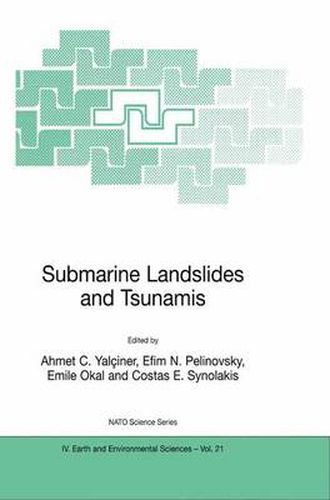Readings Newsletter
Become a Readings Member to make your shopping experience even easier.
Sign in or sign up for free!
You’re not far away from qualifying for FREE standard shipping within Australia
You’ve qualified for FREE standard shipping within Australia
The cart is loading…






Tsunamis are long water waves generated by impulsive geophysical motions of the seafloor. They inflict significant damage and casualties both near-field and after evolving over long propagation distances and impacting distant coastlines. They can also affect geomorphologic changes along the coast. Tsunamis can be triggered by sea floor deformation, landslides, slumps, subsidence, volcanic eruptions and bolide impacts. Understanding tsunami generation is of paramount importance for protecting coastal populations at risk, coastal structures and the natural environment. At present there are no adequate quantitative methods for quantifying tsunami generation, so that adequate discrimination of their sources from coastal inundation data is difficult. The accurate and reliable prediction of the initial waveform and the associated coastal effects of tsunamis remains one of the most vexing problems in geophysics, and - with few exceptions - has resisted routine numerical computation or off-the-shelf solutions. This book presents interdisciplinary, comprehensive modern investigations, with contributions ranging from basic and applied science to coastal zone management. It is aimed at tsunami scientists, coastal and ocean engineers, marine geologists and geophysicists, planners and policy makers, and coastal zone managers seeking to better understand and mitigate the coastal impact of tsunamis.
$9.00 standard shipping within Australia
FREE standard shipping within Australia for orders over $100.00
Express & International shipping calculated at checkout
Tsunamis are long water waves generated by impulsive geophysical motions of the seafloor. They inflict significant damage and casualties both near-field and after evolving over long propagation distances and impacting distant coastlines. They can also affect geomorphologic changes along the coast. Tsunamis can be triggered by sea floor deformation, landslides, slumps, subsidence, volcanic eruptions and bolide impacts. Understanding tsunami generation is of paramount importance for protecting coastal populations at risk, coastal structures and the natural environment. At present there are no adequate quantitative methods for quantifying tsunami generation, so that adequate discrimination of their sources from coastal inundation data is difficult. The accurate and reliable prediction of the initial waveform and the associated coastal effects of tsunamis remains one of the most vexing problems in geophysics, and - with few exceptions - has resisted routine numerical computation or off-the-shelf solutions. This book presents interdisciplinary, comprehensive modern investigations, with contributions ranging from basic and applied science to coastal zone management. It is aimed at tsunami scientists, coastal and ocean engineers, marine geologists and geophysicists, planners and policy makers, and coastal zone managers seeking to better understand and mitigate the coastal impact of tsunamis.